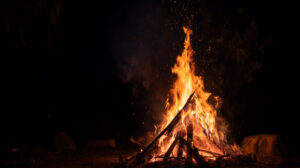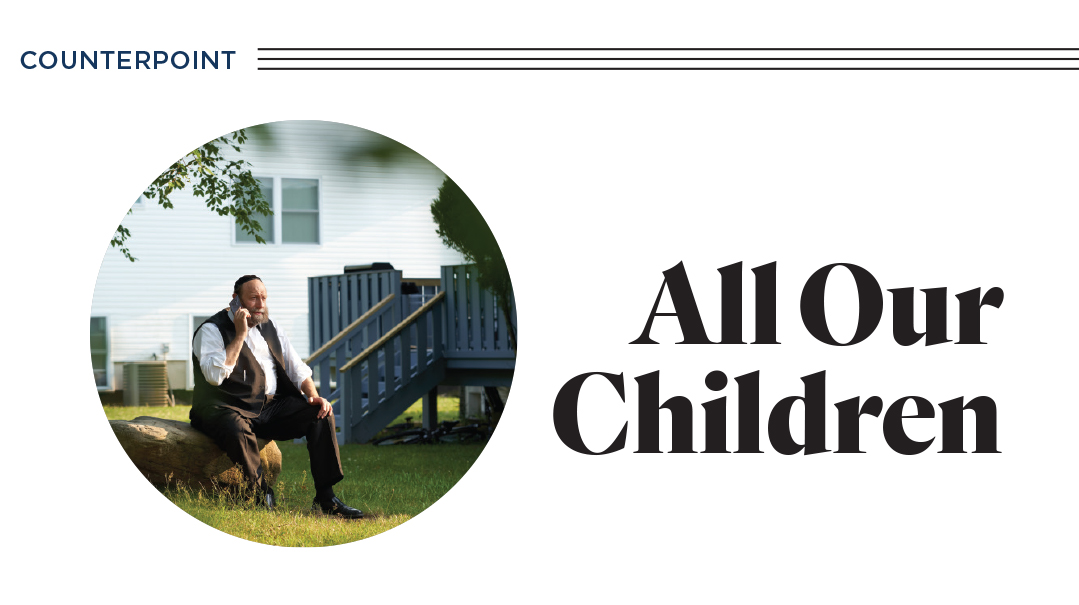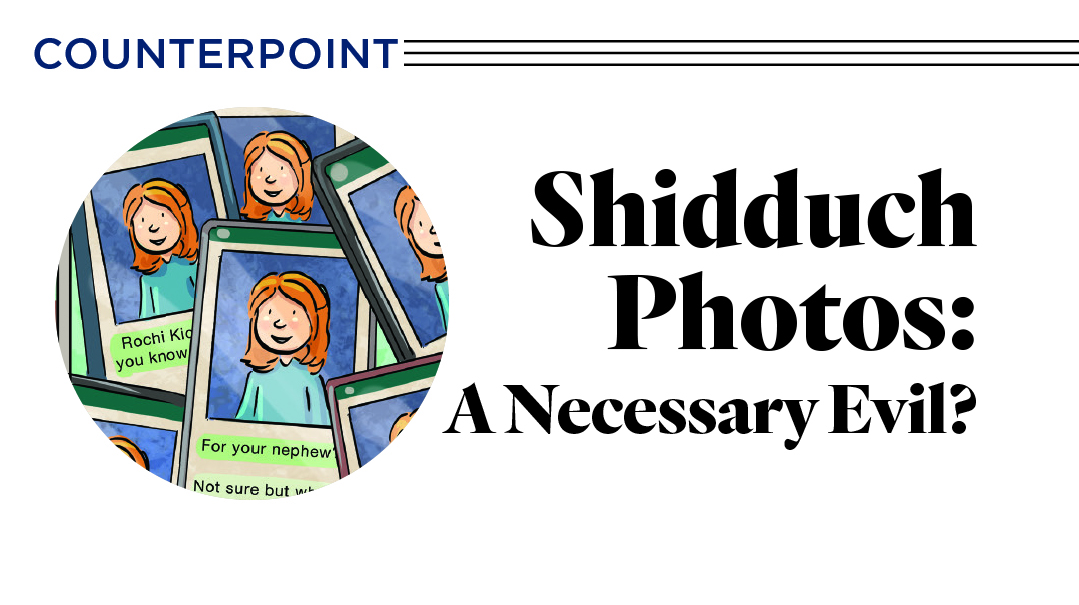Meeting the Baal Shem Tov in the 21st Century, Revisited. The Conversation Continues

More responses to 'Meeting the Baal Shem Tov in The 21st Century

Not the Only Avenue: Pinchas Wolhendler
There was one aspect of your article on chassidic revival and the follow-up this past week that bothered me. In my opinion, the article, and Rabbi Weinberger’s rebuttal of Rabbi Shafran, give one the impression that chassidus is all Yiddishkeit has to offer. Anyone not learning sifrei chassidus and “pnimiyus” is a cold, dry Litvak doing mitzvas anashim melumadah, with no feeling or kavanah whatsoever.
This is completely untrue. Rav Hershele Spinka ztz”l once said: “Everything that you’ll find in all of the chassidishe seforim can be found in the Chovos Halevavos.” It is true that many people are inspired from learning chassidus, but to say that there is nothing out there for a spiritual seeker other than chassidus is going a bit far in my opinion.
There are hundreds of chassidish bochurim in litvish yeshivos. Are you saying that it’s a yeridah for them, that they’re abandoning places of avodas Hashem for spiritual deserts?
I once heard a powerful story from a chassidish mashpia. He said that the Baal Shem Tov was a tzaddik yesod olam and a baal ruach hakodesh, but so was the Gra ztz”l. So how can it be that the Baal Shem Tov felt chassidus is so important, while the Gra opposed it so strongly?
The mashpia answered: Both the Baal Shem Tov and the Gra had a vision of the future generations. The Besht was shown a modern world without chassidus. “This is terrible!” he said, and immediately hastened to establish the chassidic movement. The Gra was shown the future with chassidus. “This is terrible!” he said, and immediately hastened to oppose the new movement.
I do not mean to chas v’shalom disparage the chassidic movement. I myself am a born-and-bred chassid and learn chassidishe seforim seriously. But the article seemed a little bit too over-dramatized, and I heard a tone of condescension toward our heilige yeshivish brothers, which I feel needs to be protested.
Confusing the Icing for the Cake: Shmuli Berglas
As an avreich who enjoys Rav Moshe Weinberger’s shiurim on the seforim hakedoshim, I cannot help but express my thoughts on the recent article “Meeting the Baal Shem Tov in 2018.”
While this new movement that is sweeping the Jewish world seems to be reason for excitement, is it unreasonable to be nervous for those boys who are not yet committed to the struggle of Gemara, as they may confuse the icing with the cake and settle for less — claiming to have found a cheilek in Torah that does not involve Ravina and Rav Ashi?
Of course there are those who by first tasting the icing will be led to the cake. But we should not turn a blind eye to those who will eat only the icing and be left bewildered as to why they suffer stomachaches and are still hungry. Won’t teaching the seforim hakedoshim for an almost instant spiritual lift, before enforcing the primary importance of Shas, only reinforce the negative notion that many boys hold — that Gemara is “bad” for them, and if they involve themselves with it they will surely be “failing”?
Because the neshamah’s desire for deveikus is so real and because the yetzer often “fakes us out,” won’t statements like, “Do you know how much ameilus is needed to truly understand a piece of Likutei Moharan?” and “feeling spiritual is better than feeling bad,” although possibly true, confuse these boys and give them the excuse they have been waiting for to close their Gemara instead of embracing its challenge? And don’t we know that without the Gemara, the “spirituality” they will find will not be the real, lasting connection their neshamos crave?
If It Strengthens Your Gemara Learning: Elchonon Ebert, Doylestown, PA
Many years ago I started learning Tanya. I had started by learning Nefesh HaChaim. My friend Rav Moshe Soloveitchik told me his uncle Rav Yoshe Ber ztz”l had said that in order to understand Nefesh HaChaim one must learn Tanya, as it was written as a counterbalance to Tanya. I became enamored with Tanya but realized that it would lead me to become further attached to limud chassidus.
So I called my rosh yeshivah, Rav Shmuel Berenbaum ztz”l, with whom I was very close, and asked him whether I should continue. He answered, “If it will strengthen your Gemara learning, then continue.”
Subsequently when I would go into New York for fabrengens, I would feel an achrayus to stop in the Mirrer Yeshivah to talk in learning with the rosh yeshivah.
For over 20 years, the Rosh Yeshivah was my guest on Chol Hamoed Succos and I’d watch him looking through some sifrei chassidus. I guarantee that the Rosh Yeshivah was not a proponent of darchei chassidus. He was permeated with Gemara and his shmuessen in yeshivah were based on Chazal and Gemara — and believe me, they lit a fire in those that had the privilege to hear them. It’s just that he recognized that for some, chassidus is beneficial.
A Void Left Unfilled: Name Withheld
I attended a typical litvish-style yeshivah about three decades ago. Then and now I thirst for the waters of Torah, which fuel my ruchniyus. I have a very analytical mind, well-suited for yeshivah learning, and indeed I was a top adept learner, scoring top marks on bechinos. I grew from all of my learning, but a void in my heart was left unattended in the mesorah of that learning.
How I wish that my rebbeim had tools in their repository to impart their teachings in a manner that went from their hearts into mine. My heart was so open then to inspiration, and my growth then could have been made greater, had feeling and warmth been infused into the mesorah of the sugyos we learned together and with less of a robotic transmission.
Thirty years later I still miss not receiving any impact beyond the integral impact of the Torah I learned together with my rebbeim in yeshivah. As an adult I’ve added that impact on my own, but my first choice still would have been to receive it back then.
Rabbi Shafran writes: “We must find ways to awaken them.” “Them” also applies to top bochurim like I was. I ask, what is your plan to provide that to your talmidim?
Don’t Squander the Basics: Yaakov P.
I found the exchange between Rabbi Shafran and Rabbi Weinberger mesmerizing, and courageous on both their ends. Talmidei chachamim going on record and sharing perspectives is how we’re still here, still committed, still thriving, baruch Hashem.
I’d like to weigh in with my experiences, as perhaps they are indicative of the struggles of others. I learned in the classic yeshivos and did nicely, feeling accomplished and successful.
When I went to learn in Eretz Yisrael, in Brisk, I discovered another dimension to life. I saw how someone — anyone, really — could sit down and learn Noam Elimelech after coming out of the mikveh Erev Shabbos, with a face that’s shining. I saw people grasping onto the final minutes of Shabbos like a child parting from his parents at the airport. I saw relatively ordinary people get tears in their eyes as they lifted the daled minim for the first time.
I was drawn into the world of Rav Tzvi Meir, then Breslov and Chabad. I danced in Tzfas and my soul came alive at the Vizhnitzer minyan on Leil Shabbos at the Kosel. Everything — a missed bus, a lost wallet, a heat wave — was a cause for joy in Hashem’s will. Life was one long string of joy.
I went back to America, hoping to lead a chassidishe life, and together with my wife, we built a home that is not outwardly chassidish, but retains the important elements of this approach.
But I discovered that once the novelty wore off and it became more formal, more institutionalized — where do you daven, which mossad do you send do, what minhag you keep — it felt dry, empty of that liberating exuberance I’d felt in Yerushalayim.
And I discovered something else. Menorah and Shabbos and daled minim are crucial parts of Yiddishkeit, but so is the Ketzos on yiush and the Minchas Chinuch on the melachos and the Brisker Rav on lishmah. To not know them is to live a deprived existence, too. To be unaware of where and how to locate the halachos on borer on Shabbos is to be an am ha’aretz, and no matter how much purity the mikveh makes you feel, it’s still no great honor to be an am ha’aretz.
Life is short. Time is valuable. There’s lots to learn. Now, at 27, and woefully undereducated, I rue the long days in Tzfas swaying at a holy kever. Sure, there’s room for chassidus, but without knowing Torah, you’re missing the basics. What good is a flaming heart if the body isn’t whole?
A Resounding Yes: Deena Zivarts, Brooklyn, NY
I thoroughly enjoyed Rachel Ginsberg’s “Meeting the Baal Shem Tov in 2018” and agree that chassidus and its worldview has been finding its way into the litvish/yeshivish world. I am also an example of this, as I come from a litvish background, but sometimes go to lectures at a local Chabad shul, and have started listening to online shiurim on the Tanya.
As to the question raised in the article of whether dabbling in chassidus is a good thing, my answer is a resounding “yes.” More and more, I have been finding that at key moments in my life, bits and pieces of every shiur or piece of Torah that I have ever heard or read will bubble up into my consciousness and provide me with an insight, inspiration, or chizuk just when I need it.
Just as there is no time order to the Torah, our consciousness isn’t linear, so those of us who come to the Baal Shem Tov’s lessons in a seemingly haphazard way can still gain meaningful information from them.
(Originally featured in Mishpacha, Issue 713)
Oops! We could not locate your form.











